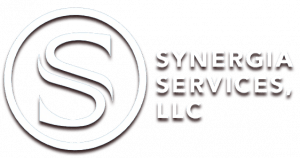It is tax refund season for many Americans, including seniors. Most people (74% of filers in 2020) will get money back after submitting their tax return. The average tax refund was more than $2,800 in 2021, which is a sizable chunk of change. It is worth looking at smart ways to allocate your potential windfall rather than frittering it away or blowing it all on an impulse purchase.
Making a smart money move now can pay off in the future. Here are 10 wise ways to use your refund:

- Pay off credit card debt. The interest on credit card debt is rising at the steepest rate in decades, according to the Federal Reserve Bank of New York. And with interest rates set to go up, the trend will only continue. “Using your tax refund to pay down your credit card debt is an excellent choice, since credit card rates are very high and likely headed higher,” says Ted Rossman, CreditCard.com analyst. The average interest rate is more than 16%, and most people carry a balance of more than $5,000. Put your tax refunds from this year and next toward that amount and you will be free of credit card debt by about this time next year.
- Start or add to your emergency fund. Six in 10 Americans have less than $1,000 tucked away for emergencies, according to a recent Bankrate survey. A surprise car repair or health bill can be devastating when there is no money to pay for it. Often, people put the bill on their credit card and then find themselves unable to get out from under the multiplying debt. Put your refund in a separate savings or money market account that is earmarked for emergencies only.
- Add to retirement savings. If you work, you can contribute to an Individual Retirement Account (IRA). The limits are $6,000 per person in 2022, or $7,000 if you are 50 or older. Take advantage of a Roth IRA and make taxable contributions; the principal and earnings can come out tax-free. For a tax deduction this year, contribute to a traditional IRA. There are phase-out ranges for high earners. For 2022, 401(k) contribution limits have risen to $20,500. If that seems like too much, remember that the average retirement age is 63, and more and more Americans are living to 100.
- Save for health care. If you are covered under a high deductible health plan (HDHP), you may be eligible to contribute to a health savings account (HSA). These gems are tax-free when the money goes in, tax-free while it compounds, and tax-free when you take the money out for qualified health expenses – a generous category that even includes long-term care. Contribution limits are $3,650 for an individual and $7,300 per family for 2022. If you are 55 or over, you can tack on an additional $1,000. Look for a custodian that offers investment opportunities, rather than just interest on savings, for considerably greater growth over time. Another trick is to pay out of pocket for current health expenses while saving receipts. You can redeem them any time, even decades in the future, while letting your HSA balance grow tax-free during those years.
- Invest in the stock market. The historical return on money in the stock market beats bonds, savings accounts, and certificates of deposit. If you will not need the money in the near term, place it in the market where it has the potential for healthy returns. One choice to consider is a broad-market exchange traded fund, or ETF, to diversify your holdings.
- Start a business. Using your refund to seed a business idea can be a smart move. Sell goods on eBay or offer your writing talent on Fivr. Whatever your talent, there is a place to sell it on the internet. If you would rather keep it local, savvy cooks can create sauces or baked goods for the local farmer’s market. Your money can go toward creating inventory, designing a website, or even toward learning a new talent.
- Bolster your insurance policies. Get an umbrella insurance policy in case someone is hurt while on your property or by your car. The cost is about $200 to $400 for a year of coverage with a $1 million payout. As climate change impacts the number and severity of hurricanes and storms, you may want to consider adding to your home insurance. If your sewer backs up, you will be glad you paid $130 for a $15,000 policy, which is not part of standard home coverage. A 6.5 kw portable home generator runs about $900.
- Help your grandchildren save. One way to help the grandkids is by funding a 529 college plan, but it has its pluses and minuses. Another idea is to fund a Roth account for kids who earn money during the year. These custodial accounts can be set up for children of any age as long as they have earned income for work they completed or from a business they own. This includes money earned from babysitting, yard work, and so on. Also, it is not against the rules for a grandchild to earn the income, keep it, and have grandparents fund a Roth for them in that amount.
- Buy time with a financial planner and/or estate planner. Having a solid financial plan can pay off in peace of mind and solid returns over the span of your retirement. Some advisors charge 1% of assets under management, but others go by a flat fee. If you are unsure of who to use, check out this article on how to pick a financial planner. While you’re at it, make sure you have an estate plan in place. An attorney who specializes in estate planning can ensure that your money and possessions will go to the people and organizations you choose and that your estate will not be tied up in legal knots after you pass.
- Donate wisely. If you are not quite financially comfortable enough to give charitably, be strategic. You can “bundle” your charitable giving by donating a few years’ worth all at once to qualify for gift itemization on your tax return. Find tips on charitable giving and taxes here. One vehicle to consider is a donor-advised fund. You can set aside money for donations and get a tax deduction without having to decide right away which organizations will benefit. Qualified charitable distributions (QCDs) can allow people aged 70.5 and older to donate up to $100,000 directly from a taxable IRA. These donations count toward the required minimum distribution (RMD) for that year.
Why the Best Refund is No Refund
You read that right: the best tax refund is no refund at all! Why? It means that you actually retained the income you earned. You see, when you get a tax refund, it simply means that you had automatically given more in taxes than the government needed. A better strategy is to more precisely determine what you will owe and use that “extra” money at the beginning of the year instead of at the end. Seniors, this includes money that your brokerage is withholding from IRA distributions. For more details, go here.





